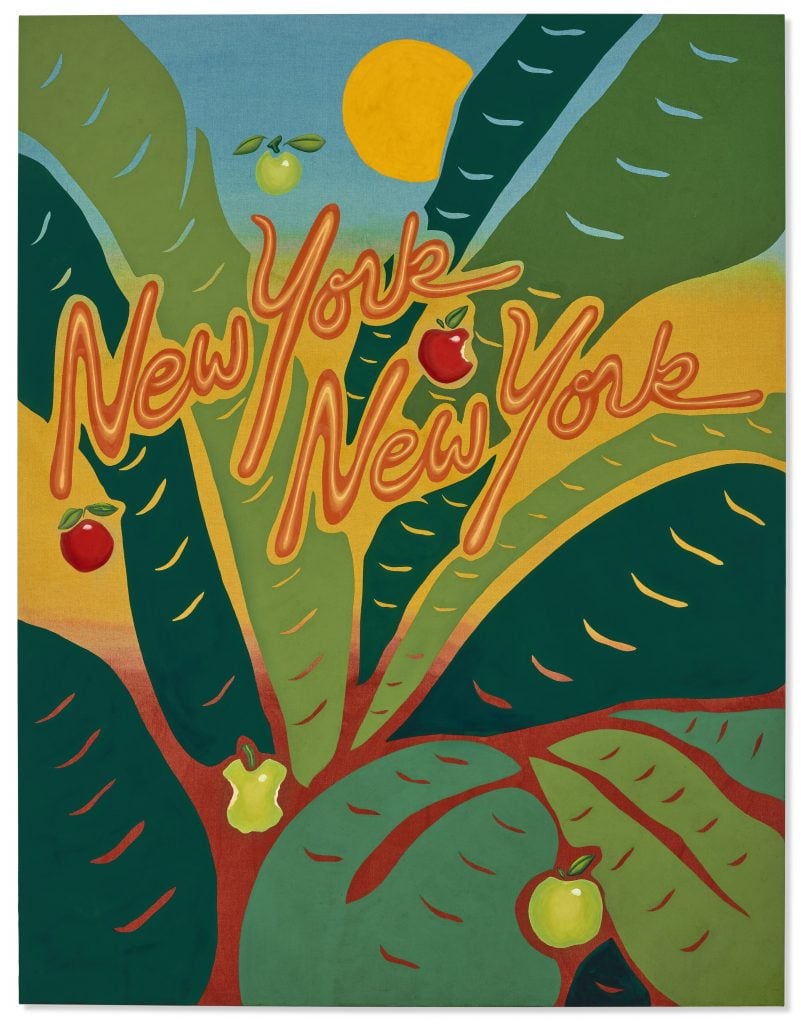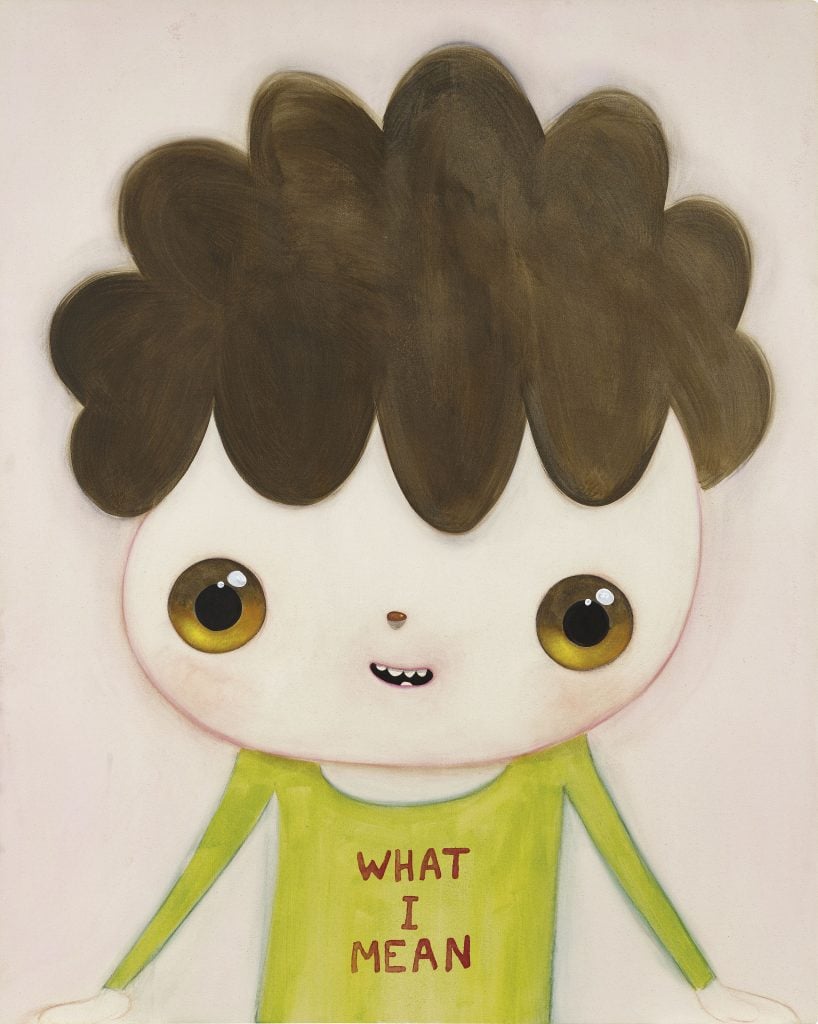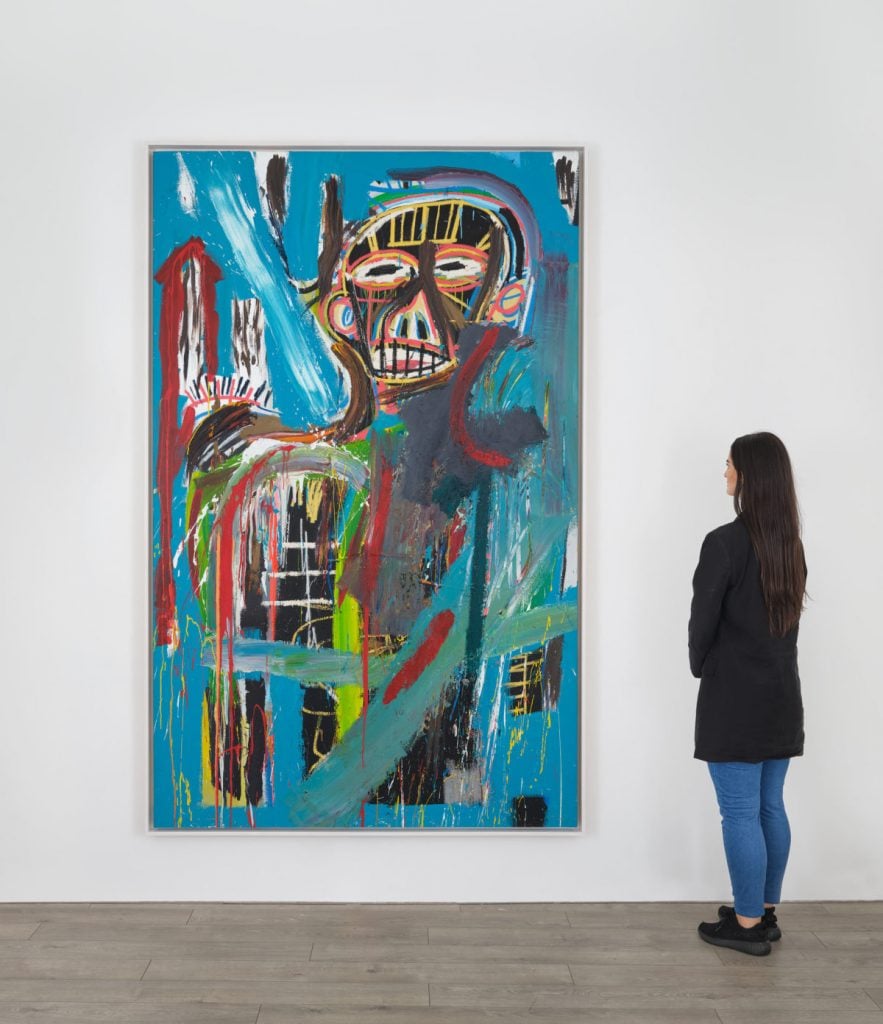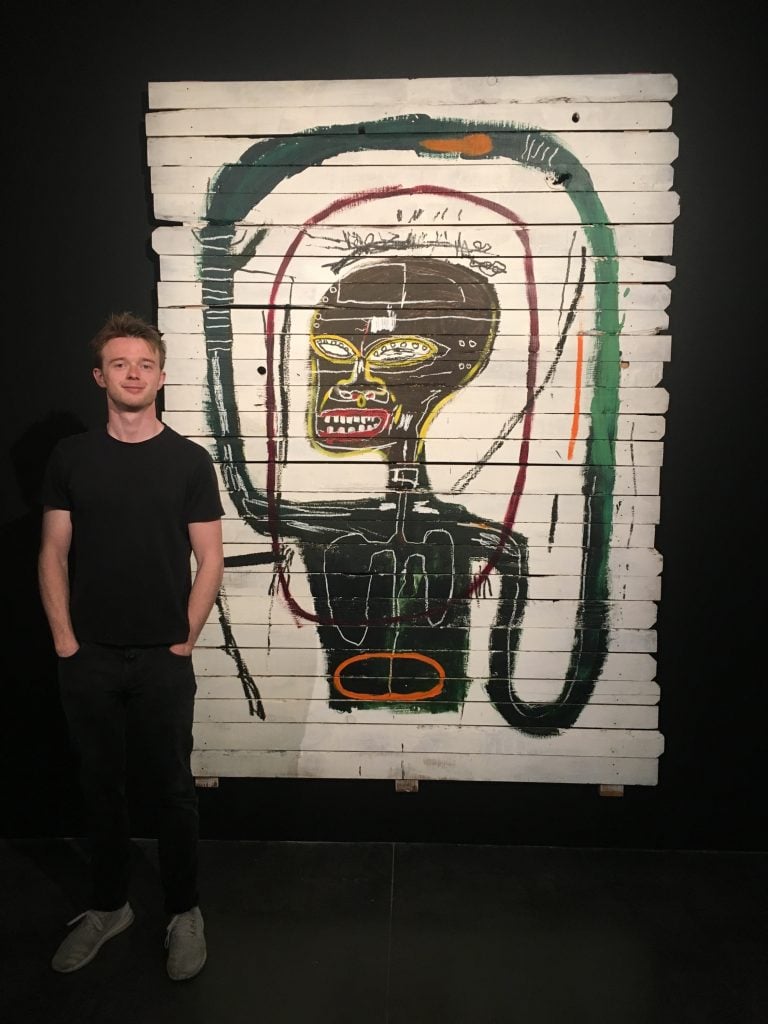The Art Detective is a weekly column by Katya Kazakina for Artnet News Pro that lifts the curtain on what’s really going on in the art market.
From his home in Minneapolis, Minnesota, the 27-year-old dealer Connor Remes talks to dozens of art buyers every week. Most are in their 20s and 30s, based in mainland China, Hong Kong, and Taiwan, and pursue works ranging from $10,000 to $1.5 million. Frequent conversations involve emerging artists with soaring markets like Amoako Boafo and Eddie Martinez and others who are poised to take off, like Ivy Haldeman and Szabolcs Bozó.
Remes, whose father is the collector Peter Remes, says his client base grew “significantly” during the pandemic as new buyers entered the art market. With galleries closed, art fairs canceled, and museums in lockdown, they turned to online platforms like Instagram to discover artists making colorful, commercial paintings that looked good as JPEGs. Some buyers who weren’t able to get works through galleries turned to Remes to find them on the secondary market.
“Everyone wants to say they bought X, Y, Z artists when they were a nobody,” Remes said. “It’s not only the bragging rights in the collecting circles, but it can be quite substantial returns as well.”
Against the backdrop of a democratization of the financial world and the expansion of retail investing platforms like Robinhood, a new generation of art buyers is gaining prominence—and setting records. Lots priced between $100,000 to $1 million generated $264.5 million at auction in April, according to the Artnet Price Database, the largest total of any price bracket. Not only was it a massive jump from last year, it was also an 18 percent increase from the same period in 2019, pre-pandemic.

Joel Mesler, New York, New York (2021). Courtesy of Christie’s Images, Ltd.
During last week’s auctions in New York, buyers set new high marks for artists including Alex Da Corte ($287,500), Nina Chanel Abney ($990,000), Joel Mesler ($275,000), and Jonas Wood ($6.5 million).
“I didn’t know many of the names of buyers and bidders in our 21st-century sale,” said Alex Rotter of Christie’s, who crafted a new auction concept focused on the past 40 years of art-making specifically to attract new audiences. “We saw different energy, a different level of bidding, and also different people bidding.”
Profit is a significant driver for these new entrants. Unlike earlier generations of collectors, who found it gauche to talk numbers, they grew up as art became accepted as an investment that sometimes outpaced traditional asset classes.
Some are expanding their online day trading from shares and Bitcoin to sought-after artworks, according to dealers and auction executives. And just as traders swap war stories on Wall Street Bets, these buyers are not shy about sharing prices they’ve paid and gains they’ve made.
One longtime market player described them as “art bros”: young men who’ve made millions in equities and are now moving markets for individual artists from their bedrooms —without ever setting foot in a gallery.
Two macroeconomic trends underpin the current demand for art as well as collectibles such as watches, sports cards, and NFTs.
First, many professionals are awash in cash thanks to soaring equity markets and aggressive stimulus efforts by fiscal authorities. In the depths of the pandemic, when everything was shut down, U.S. households were saving one-third of their discretionary income compared to a more typical rate of five to six percent, said Benjamin Mandel, head of portfolio strategy at Itaú Asset Management in Sao Paulo, Brazil. With inflation on the rise after more than a decade, investors are now looking to channel some funds into assets that are perceived as a hedge against it: real estate, commodities—and, potentially, art, he said.
Another trend playing into this shift is the intergenerational transfer of wealth. Those who are inheriting family fortunes want to make their own unique mark. “They are going to find their own thing and they are going to stick with it,” Remes said. “That’s why we are seeing prices for younger artists escalate.”
Asia is also playing an increasingly large role. Whereas several years ago, Asian collectors were focused on the trophy market, they are now also chasing the same up-and-coming talents as their American and European counterparts—at auction, through galleries, and even directly from the artists.
“The buying pool is much larger than before,” said Kevie Yang, head of Phillips Art Advisory. “It used to take years for the artist’s primary prices to go from $50,000 to, say, $200,000. Now it can take a year or even less.”

Javier Calleja, What I Mean (2017). Courtesy of Christie’s Images, Ltd.
An artist doesn’t have to be a household name anymore to break the $1 million mark at auction. Take Spanish artist Javier Calleja, whose solo show is opening at Almine Rech Gallery in Shanghai this Friday. His big-headed, big-eyed cartoonish characters, reminiscent of Yoshitomo Nara, are all the rage in Asia. A painting of a green-eyed boy, Waiting for a While (2019), fetched $1.1 million at Christie’s online sale in March, more than doubling its high estimate. The artist made his auction debut just two years ago, when prices were under $5,000.
Chinese-born, Los Angeles-based collector Harry Hu, 26, isn’t into Calleja, but getting access is difficult even for an active art buyer and museum patron like him. (He said he has spent more than $1 million on art in the past year, including 16 new works in May alone.)
“It requires a lot of effort to get a piece of art,” he said. “We joke that we have to beg people to take our money.”

Collector Harry Hu with artist Cai Guo Qiang. Courtesy of Harry Hu.
Hu, who attended the California Institute of the Arts, said he isn’t driven by profit (his family made its fortune in alcohol and beverage distribution as well as concert stage equipment). He plans to open an artist residency for international artists in Los Angeles next year and eventually set up a foundation for his collection. He’s friends with some artists whose work he owns, including Martinez and Katherine Bradford, whom he calls “grandma.” He is donating a painting by Glenn Kaino, Salute (Second Salute) (2019), to the Los Angeles County Museum of Art and joined the Whitney Museum’s painting and sculpture acquisition committee this spring.
“There are many, many people like me, who will become important one day,” Hu said. “We don’t have a lot of pressure for money. We can do something meaningful. I chose art.”
While Hu said he’s not a flipper, he is keenly aware of the escalating prices for many of the artists whose works he owns. He paid $90,000 for a Martinez flower painting recently and was glad to see a similar piece fetch $325,000 at auction last week.
“I am happy that these guys are doing great,” he said, “and hope my collection value goes up.”
 Magnifying Glass
Magnifying Glass
A closer look at one work making waves in the market this week

Jean-Michel Basquiat, Untitled (1982). © The Estate of Jean-Michel Basquiat, courtesy of Lévy Gorvy.
While paintings by Jean-Michel Basquiat ignited global bidding wars at Sotheby’s and Christie’s last week, another majestic canvas by the artist quietly greeted visitors at Lévy Gorvy gallery on Madison Avenue. Painted in 1982, the untitled work depicts a skeletal figure amid blue and red swashes. A totem. A hero. A prophet.
Also, a question: For sale or not for sale?
The painting is recorded in an iconic photograph of Annina Nosei and Basquiat, taken while he was working in the basement of her gallery in 1982. The eight-foot-tall, five-foot-wide canvas belongs to Lorenzo Fertitta, a Las Vegas collector who bought it privately for about $50 million at the end of 2019 at Sotheby’s, according to people familiar with the deal. The seller at the time was Marieluise Hessel, a benefactor of Bard College. She acquired it in 1985 from Gagosian gallery, according to its published provenance.
Sotheby’s and Lévy Gorvy declined to comment. Fertitta couldn’t be reached for comment.
The work has been shown in public only occasionally over the years, including at Bard in 2010 and the Fondation Louis Vuitton in 2018. But over the past 10 months, it has appeared at no fewer than three Lévy Gorvy locations: Hong Kong, Palm Beach, and now, New York. It arrived in time for Frieze New York and the May auctions and remains on view through May 29.
“It is a masterpiece,” said Brett Gorvy, co-founder of the gallery and a former Christie’s executive. “I have worked with many Basquiats in my time, but very few have this surface and color and bravado.”
The work is not for sale, he said.
Gorvy initially borrowed it during COVID to showcase in Hong Kong while the rest of the art world was in lockdown. “It was fantastic,” he said. “People seem to forget what we did last year to make our galleries relevant and dynamic.”
While it was on view there, the owner turned down unsolicited offers, Gorvy said. At the time, the painting was insured for $65 million, according to a person familiar with the work.
It’s unclear whether the value would be higher now following a $93.1 million result for Basquiat’s skull painting at Christie’s on May 11.
Why would a powerhouse gallery schlep something so valuable around the globe, if not to sell it?
“I am of the firm belief that collectors have a responsibility to lend their works when it is appropriate for the work and its condition to travel,” Gorvy said. “It has had little public exposure and it needs to be seen to be really appreciated.”





 Magnifying Glass
Magnifying Glass





